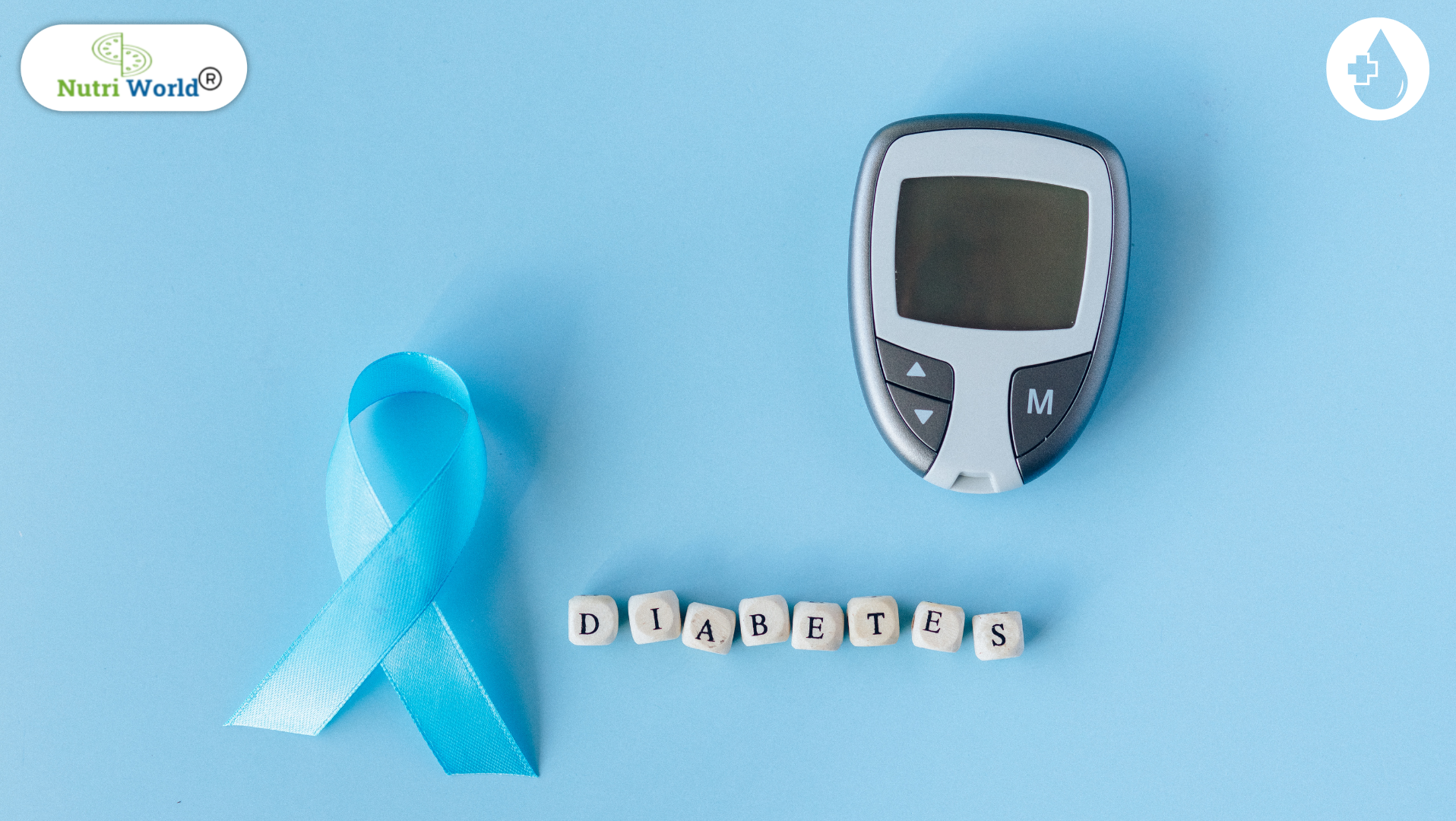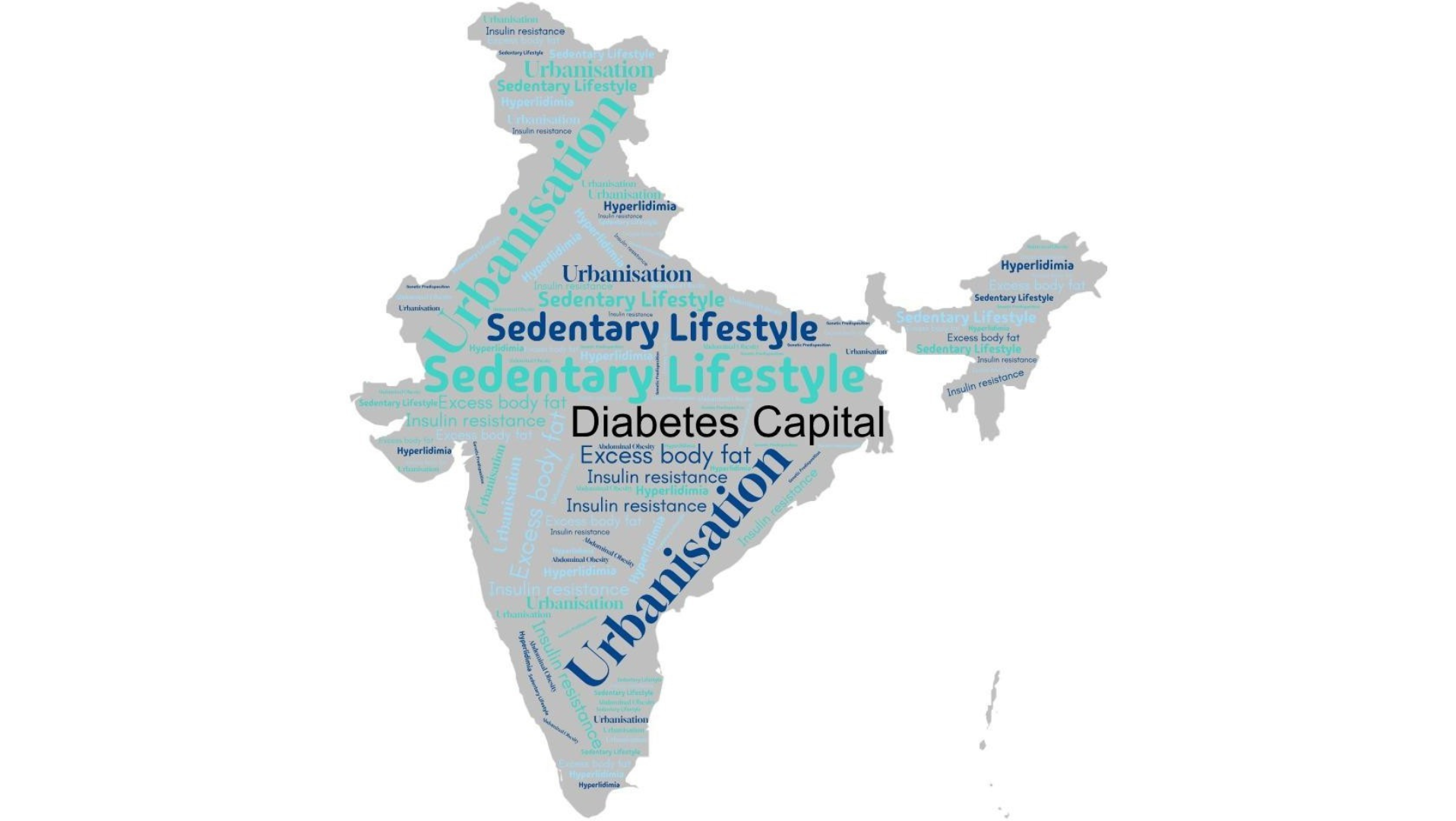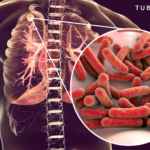By Nutriworld | Dt. Dipanwita Saha
Diabetes mellitus is a chronic, non-communicable disease characterized by elevated blood glucose levels due to insufficient insulin secretion or ineffective insulin action. It can be inherited or acquired. India, World’s Diabetic Capital, faces a growing burden of this condition.

The main types include:
❖ Type 1 Diabetes Mellitus (T1DM):
Insulin-dependent, caused by pancreatic insulin deficiency. It is an autoimmune disorder in which pancreas are unable to produce It is usually caused by genetic predisposition, viruses pollution etc. and is a comparatively rare form of diabetes. Some characteristics are– young age, ketoacidosis, tests positive for antibodies e.g. Anti-GAD antibodies.
❖ Type 2 Diabetes Mellitus (T2DM):
Non-insulin dependent, often linked to insulin resistance. Unlike in T1DM, in this condition, the pancreas are able to produce insulin but the body is resistant to It is strongly linked to obesity. Typically seen in adults (however now also seen in people in the ages 20s and 30s).
❖ Gestational Diabetes Mellitus (GDM):
Develops during pregnancy. Many physiological and hormonal changes during the pregnancy produce stress and resistance to the action of insulin, resulting in high blood glucose levels. It can lead to complications like miscarriages, caesarean section delivery, birth defects in the child, and babies larger in size.
❖ Other Specific Types:
Result from pancreatic damage due to toxins, infections, Examples include– pancreatitis, calcium depositions in the pancreas, drugs and steroids after kidney transplant.
❖ Prediabetes:
Prediabetes is a transitional stage between normal blood sugar control and the onset of diabetes. Includes impaired glucose tolerance (≥200 mg/dL after 2h of 75g glucose) and impaired fasting glucose (≥126 mg/dL).
India, the diabetes capital of the world, faces a soaring crisis with 41 million affected—one in five diabetics globally. While genetics play a role, rapid urbanization, poor diets, and inactivity are the real drivers. Combating this epidemic demands urgent policy action, multi-sectoral efforts, and a national shift toward healthier living.
Why Diabetes Prevention in India Is Challenging






India World’s Diabetic Capital — this alarming title isn’t just a reflection of rising numbers, but a wake-up call to the deeper issues plaguing the nation. India’s diabetes crisis isn’t just about genetics or lifestyle—it’s also a battle against ignorance and inaccessibility. The CURES study reveals 25% of Indians are unaware of diabetes, and only 11.9% recognize obesity and inactivity as risks. With poor healthcare access, high costs, and weak policies, the fight against diabetes is being lost before it even begins.
If India is to shed the label of being the World’s Diabetic Capital, awareness, education, and policy reform must become urgent national priorities.

Combating Diabetes
1. Type 1 Diabetes
- Master Blood Sugar Control – Keep glucose levels stable to prevent complications and stay
- Fuel Your Body Right – A well-balanced, nutrient-rich diet is your foundation for strength and
- Exercise – People with T1DM can train just like anyone else! The key? Prevent low blood
- Smart Snacking = Have a pre- and post-workout snack to keep energy
- Monitor & Adjust – Track glucose levels before, during, and after
2. Type 2 Diabetes
a. Prevention & Management Through Lifestyle:
Exercise & Diet First – For those with borderline high blood sugar, medications aren’t always needed. A structured diet and exercise plan can effectively keep diabetes in check.
b. Obesity: The Root Cause:
Obesity is a major driver of Type 2 Diabetes. Managing and preventing weight gain can drastically reduce diabetes prevalence.
c. Smart Nutrition for Blood Sugar Control:
- Balance Every Meal – Include complex carbs, proteins, healthy fats, and fiber (both soluble & insoluble) for sustained energy and glucose stability.
- Ditch the Junk – Say no to refined sugars, ultra-processed foods, and packaged
- Small, Frequent Meals – Avoid large meal gaps; eat in controlled portions throughout the
- Hydrate Right – Aim for 5–2 liters of water daily to support metabolism and digestion.
d. Move More, Stay Active:
- Exercise Daily – Combine cardio & resistance training for optimal blood sugar
- Stay Active All Day – Avoid long sitting hours; move
- Post-Meal Walks Are a Must – A 5-minute walk after every meal can significantly improve glucose regulation.
e. Diabetes Isn’t a Life Sentence—It’s a Wake-Up Call!
- With the right habits, discipline, and awareness, Type 2 Diabetes can be prevented and controlled
3. Gestational Diabetes
a. Serious Risks If Left Unmanaged
- Higher Risk of Miscarriage – Increased chances of spontaneous
- Macrosomia (Large Baby Size) – Can lead to complications during
- Stillbirth Danger – Uncontrolled blood sugar raises the risk of fetal
- Future Diabetes Risk – The baby is more likely to develop Type 2 Diabetes later in
b. Proactive Management for a Healthy Pregnancy
- Smart Nutrition – Eat small, frequent meals, follow fixed meal timings, and focus on fiber- and protein-rich foods to maintain blood sugar balance.
- Safe & Supervised Exercise – Physical activity is essential but should be done under professional guidance to ensure safety.
- Regular Fetal Growth Monitoring – Close tracking helps prevent complications and ensures a healthy baby.
- Thyroid Health Matters – Unstable thyroid hormones can worsen pregnancy risks, so keep levels in check with regular testing.
A healthy pregnancy starts with controlled blood sugar. Taking the right steps protects both mother and baby from lifelong complications.
Conclusion
Diabetes is not just a health issue; it is a national crisis that threatens India’s future. Without immediate and decisive action, millions more will suffer from its devastating complications. By strengthening policies, promoting healthy lifestyles, improving healthcare access, and increasing awareness, India can take a bold step toward controlling this epidemic. The time to act is now.
By-Astha Upadhyaya
Clinical Dietitian and Certified Diabetic Educator
If you found this blog insightful, feel free to leave a comment or share it with someone who might benefit from understanding the growing diabetes crisis in India. I’d also love to hear your thoughts or answer any questions you have about diabetes, its prevention, or how nutrition plays a role in managing this condition.
Stay informed, stay healthy!
Hello! I’m Dietician Dipanwita Saha is the founder of Nutriworld and a dedicated clinical dietitian. I focus on helping individuals improve their health through personalized diet plans that are based on scientific principles. I believes that proper nutrition is crucial for healing and maintaining a balanced lifestyle, whether someone is recovering from an illness or managing a health condition.






